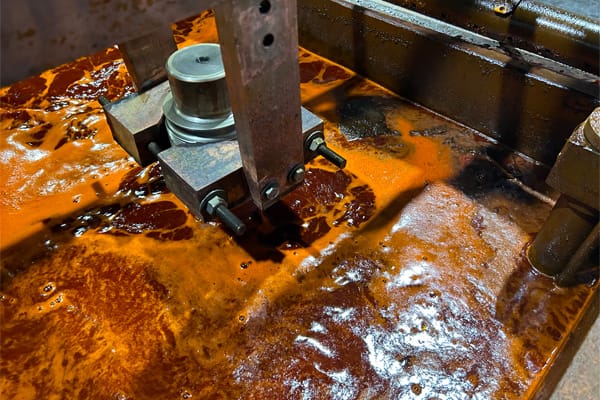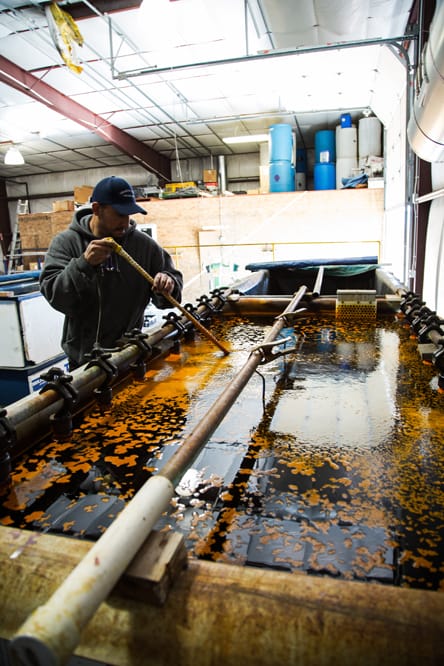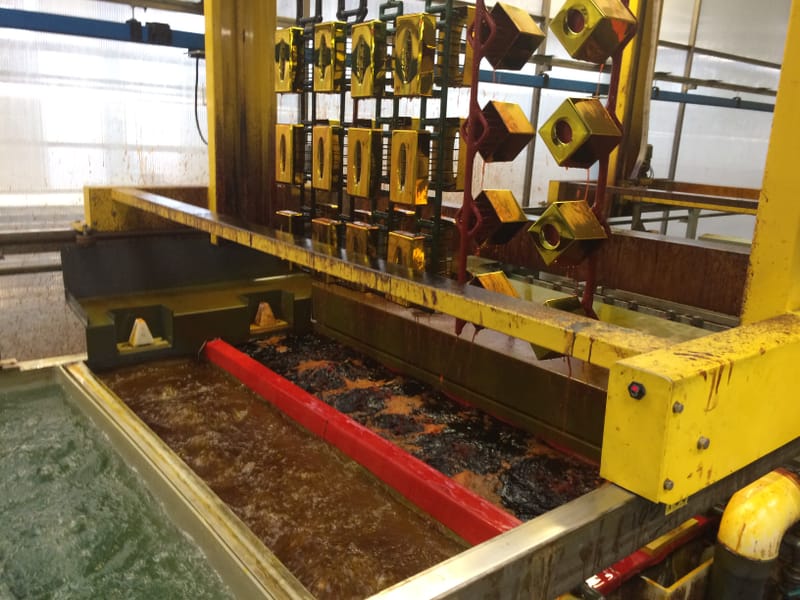Innovations in Chrome Plating Wastewater Treatment: Safeguarding Resources
Introduction to Chrome Plating from Wastewater Treatment
Chrome plating, or chromium electroplating, is a widely adopted industrial process known for enhancing metal surfaces' hardness, durability, corrosion resistance, and aesthetic appeal. However, like many industrial activities, chrome plating generates wastewater laden with various toxins. If left untreated, these contaminants pose significant risks to both human health and the environment. In this comprehensive handbook, our objective is to explore the intricacies of wastewater treatment within the chrome plating industries. We aim to provide an in-depth analysis of the challenges, methodologies, and innovations utilized to address environmental concerns and ensure compliance with regulatory standards.

Exploring Chrome Plating Wastewater
The wastewater produced during chrome plating operations contains heavy metals such as chromium, nickel, copper, and zinc, along with pollutants like organic compounds, acids, and alkalis. These contaminants originate from different stages of the chrome plating process, including cleaning, plating, and rinsing. Of particular concern is hexavalent chromium, a highly toxic form known for its carcinogenic properties and enduring environmental impact. Therefore, it is crucial to implement effective wastewater treatment methods to prevent water bodies' contamination and safeguard human health. Through an examination of the contaminants' composition and sources in chrome plating wastewater, we can gain valuable insights into the challenges faced in its treatment and the urgent need for innovative solutions.
Addressing Treatment Challenges
The treatment of chrome plating wastewater poses numerous challenges due to the complex nature of the contaminants involved. Traditional treatment methods may struggle to adequately remove hexavalent chromium and other heavy metals, potentially leading to regulatory non-compliance and environmental harm. Moreover, the significant variability in wastewater composition and flow rates presents additional challenges in designing efficient treatment systems capable of managing fluctuations effectively.
Furthermore, the considerable cost implications associated with wastewater treatment can pose financial burdens for chrome plating facilities, further complicating the issue. Despite these challenges, advancements in treatment technologies and collaborative efforts among industry stakeholders offer promising avenues for improving wastewater treatment practices and minimizing environmental impact. With a comprehensive understanding of these challenges and innovative approaches to address them, we can work towards more sustainable and responsible chrome plating operations.

Wastewater Treatment Techniques
Chrome plating operations confront considerable challenges in controlling effluent that contains a variety of pollutants, particularly heavy metals and organic compounds. However, various wastewater treatment systems have arisen that efficiently address these environmental concerns. Let's look at these techniques in depth:
1. Chemical Precipitation: Chemical precipitation is a typical treatment method for chrome plating effluent. This procedure involves adding chemical reagents to the effluent, such as lime, ferrous sulfate, or sodium hydroxide. Chemical interactions between these chemicals and heavy metals, particularly chromium, result in the formation of insoluble compounds. Subsequently, the solid precipitates can be removed from the water using sedimentation or filtering, resulting in a significant reduction in metal concentrations.
2. Ion Exchange: Ion Exchange is a successful method of eliminating heavy metals from wastewater. Ionic exchange resins play an essential role in the selective elimination of pollutants by exchanging ions with the targeted pollutants. This procedure is especially effective in eliminating hexavalent chromium, which is a highly dangerous form of chromium that is frequently discovered in chrome plating effluent. Furthermore, it may be easily integrated into current treatment systems, hence strengthening metal removal effectiveness and efficacy.
3. Membrane Filtration: Membrane filtration methodologies, such as the use of reverse osmosis and ultrafiltration, have proven successful at eliminating suspended particulates, metals that are dissolved, and other pollutants from chrome plating wastewater. The aforementioned methods use semi-permeable membranes to segregate contaminants according to their size and molecular weight. Membrane filtration provides high levels of purification, resulting in treated water acceptable for discharge or reuse in industrial processes.
4. Electrocoagulation: Electrocoagulation is a modern way of treating wastewater by using electricity to gather and clump together contaminants. This helps to remove them from the water either by making them sink or float. Compared to traditional methods that use chemicals, electrocoagulation is better becauseit uses fewer chemicals, makes it easier to get rid of sludge, and does a better job of removing tiny pollutants.
5. Biological Treatment: Biological treatment uses tiny living organisms to break down harmful stuff in wastewater. These organisms, like bacteria and other microbes, help to break down organic materials and change heavy metals into forms that are less harmful. Methods such as activated sludge, biofiltration, and constructed wetlands are examples of biological treatment. They work alongside regular treatment methods to make wastewater treatment more effective and eco-friendly. Integrating these biological processes into treatment systems helps improve overall treatment and reduces harm to the environment.

Innovations and Optimal Practices
Recent years have witnessed remarkable advancements in wastewater treatment technologies, tailored specifically to address the unique challenges faced by chrome plating industries:
1. Advancements in Advanced Oxidation Processes (AOPs): AOPs, including ozonation, UV photolysis, and Fenton's reagent, have emerged as promising solutions for degrading stubborn organic pollutants and converting hazardous hexavalent chromium into less harmful trivalent chromium. Leveraging potent oxidizing agents, these processes target contaminants at the molecular level, achieving heightened treatment efficiencies while minimizing chemical usage.
2. Embracing Green Chemistry Principles: Green chemistry principles advocate for the development of environmentally friendly processes that mitigate waste generation and toxicity. Chrome plating facilities can adopt cleaner production techniques, substitute hazardous chemicals with safer alternatives, and optimize process parameters to reduce environmental impact and enhance resource efficiency.
3. Adoption of Water Reuse and Recycling Strategies: Implementing water reuse and recycling strategies offers significant benefits by reducing the volume of wastewater generated by chrome plating operations. This not only lowers treatment costs but also conserves precious freshwater resources. Closed-loop systems, cascading rinses, and membrane technologies facilitate the recovery and reuse of process water, thereby improving sustainability and ensuring regulatory compliance.
4. Focus on Process Optimization and Real-time Monitoring: Continuous optimization of processes and real-time monitoring are essential for ensuring the efficient operation of wastewater treatment systems in chrome plating facilities. Automated controls, sensor technologies, and data analytics empower operators to optimize chemical dosing, fine-tune treatment parameters, and promptly address deviations, thereby minimizing downtime and maximizing treatment performance.

Regulatory Adherence and Environmental Responsibility
In the realm of chrome plating, strict environmental regulations are in place to uphold water quality and public health standards. Adhering to these regulations is paramount, prompting the adoption of robust wastewater treatment methods and regular monitoring to ensure that effluent quality aligns with prescribed norms.
To fulfill regulatory obligations, chrome plating facilities utilize a range of wastewater treatment techniques, including chemical precipitation, ion exchange, membrane filtration, electrocoagulation, and biological treatment. These methods efficiently eliminate heavy metals, organic compounds, and other contaminants from wastewater, thus alleviating the environmental repercussions of chrome plating processes.
In addition to regulatory compliance, chrome plating establishments actively embrace environmental stewardship initiatives. These initiatives encompass pollution prevention schemes, the implementation of environmental management systems (EMS), and the pursuit of voluntary certifications. By embracing such practices, chrome plating industries underscore their dedication to sustainability and ethical corporate conduct, ensuring minimal environmental harm and promoting responsible resource utilization across their operations.
Conclusion
In summary, wastewater treatment stands as a crucial endeavor in the realm of chrome plating, pivotal for both environmental preservation and regulatory adherence. By comprehending the complexities inherent in this process, adopting cutting-edge treatment methodologies, and wholeheartedly embracing principles of environmental stewardship, chrome plating industries can significantly curtail their ecological footprint. Through these concerted efforts, they not only safeguard precious natural resources but also uphold their commitment to sustainable practices. Moving forward, sustained research endeavors and collaborative ventures will be instrumental in propelling advancements in wastewater treatment technologies, fostering innovation, and effectively tackling the evolving environmental challenges that confront the chrome plating sector.